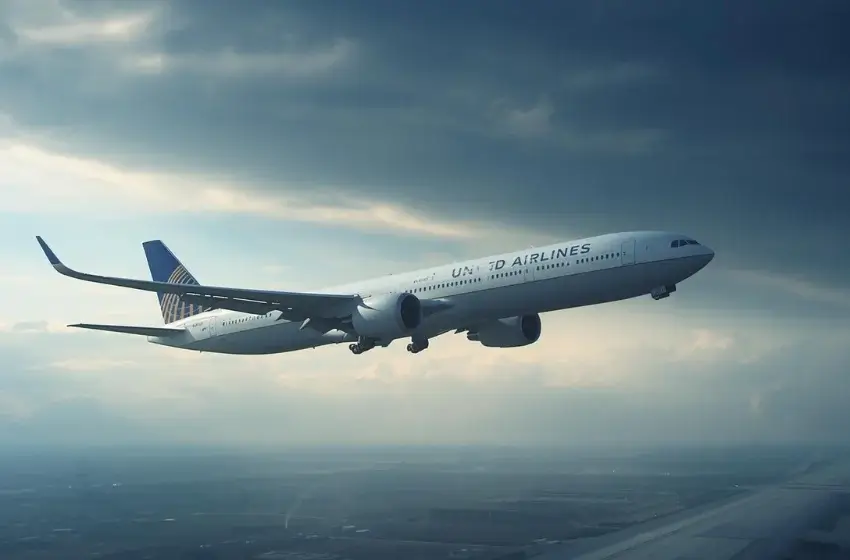United Airlines Flight UA770 Emergency Diversion: What Really Happened
In the aviation world, safety always comes first. Airlines perform strict checks, and pilots are trained for nearly every scenario. Yet, unexpected situations can still arise the kind that make headlines and raise questions. One such incident was the United Airlines Flight UA770 emergency diversion.
At Mindsflip, we go beyond the surface to share the full picture. When passengers aboard UA770 suddenly landed at an unexpected airport, people wanted answers. What went wrong? Was anyone hurt? And how did United Airlines respond?
This article breaks down everything you need to know about the UA770 diversion what happened, why it happened, and what it means for air travel safety.
What Is an Emergency Diversion?
An emergency diversion happens when a flight changes its route to land at an alternate airport due to an urgent issue. Reasons can include:
- Technical or mechanical problems
- A medical emergency onboard
- Cabin pressure issues
- Severe weather conditions
- Security threats or disruptive passengers
- Fuel or operational concerns
These decisions are made quickly by pilots and air traffic control to ensure the safety of passengers and crew.
Details of the United Airlines Flight UA770 Incident
Flight UA770 is a regular United Airlines service operating across major U.S. routes. On the day of the incident, the flight departed on schedule and climbed normally. However, mid-flight, something changed leading to what became known as the United Airlines Flight UA770 emergency diversion.
The aircraft was redirected to a nearby airport where emergency crews and medical teams were on standby. The plane landed safely, with no reported injuries.
Possible Causes Behind the Diversion
While airlines often keep details limited for security and privacy, several credible reports suggested a few likely causes:
Medical Emergency
A passenger fell seriously ill mid-flight. The crew provided medical aid, and the pilot decided to land at the nearest airport for immediate treatment.
Technical Issue
Some reports mentioned a possible mechanical alert. Though not life-threatening, it required on-ground inspection.
Cabin Pressure Issue
Passengers described slight ear pressure changes, possibly indicating a pressurization concern one of the more common reasons for diversions.
Officially, United Airlines described the situation as a “precautionary measure taken by the crew in response to an onboard irregularity.”
How the Diversion Was Managed
Once the decision was made, the crew followed standard emergency protocols:
- Notified air traffic control and requested priority landing
- Informed passengers calmly about the diversion
- Coordinated with airport emergency services
- Prepared for a safe, controlled landing
The professionalism of the pilots and crew ensured that the situation remained under control throughout.
Passenger Reactions
Passengers shared their experiences online soon after landing. Some expressed concern, while others praised the crew’s calm communication.
Common reactions included:
- Unexpected landing but handled perfectly.
- Crew was calm and clear.”
- Medical staff boarded immediately very professional.”
These real-time accounts highlight how clear communication plays a vital role in managing emergencies.
United Airlines’ Official Response
After the flight landed safely, United Airlines released an official statement confirming the diversion. The airline emphasized that:
- The plane landed safely with no injuries
- Passengers were accommodated or rebooked promptly
- The diversion was purely precautionary
- Safety remains their highest priority
Such quick and transparent responses reflect United’s strong safety culture.
What Happens After a Diversion
After an emergency landing, several steps follow behind the scenes:
- Inspection: Technicians check all aircraft systems before it flies again.
- Passenger Support: The airline helps travelers with rebooking, meals, or hotels.
- Medical Help: Paramedics assist any passengers needing urgent care.
- Crew Debriefing: The team reviews the incident to document what happened.
These steps ensure both passenger comfort and operational safety before normal service resumes.
How Common Are Emergency Diversions?
Although the term sounds alarming, emergency diversions are quite rare and often precautionary.
- Fewer than 1 in 10,000 flights face a diversion.
- Most are due to medical issues, not mechanical problems.
- Modern aircraft are designed with backup systems for every major component.
So, rather than being a failure, a well-managed diversion — like UA770’s — is proof of airline safety working as intended.
Why This Incident Matters
The United Airlines Flight UA770 emergency diversion reminds travelers why air travel remains the safest form of transportation. Every part of the system — from pilots to maintenance crews is trained to handle the unexpected.
Key takeaways:
- Pilots are trained to make calm, quick decisions.
- Cabin crews maintain order and reassure passengers.
- Airports are ready for emergency landings anytime.
- Safety protocols are constantly reviewed and improved.
How Passengers Can Stay Prepared
Even though flying is extremely safe, here are a few tips to stay ready during any flight:
- Pay attention to safety briefings before takeoff.
- Keep essentials like medication and chargers in your carry-on.
- Stay calm and follow the crew’s instructions.
- Ask questions if you’re unsure what’s happening.
A calm attitude and cooperation make a big difference during such moments.
Conclusion
The United Airlines Flight UA770 emergency diversion serves as a real-life example of how aviation safety systems work exactly as intended. Though the incident disrupted travel plans, it demonstrated how airlines prioritize passenger well-being above all else.
At Mindsflip, we believe stories like this deserve clarity over drama. Understanding the process helps travelers appreciate how much effort goes into keeping every flight safe.
So, while turbulence and unexpected landings can happen, one thing remains constant the commitment to safety that ensures every passenger reaches their destination, even if the route changes along the way
Dont't Miss
Aspertaan Complete Guide: Benefits, Safety, and Expert Insights













